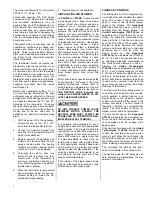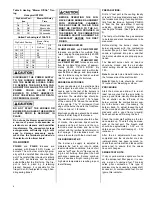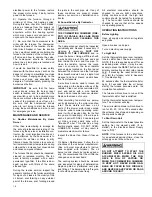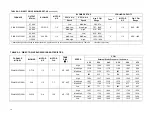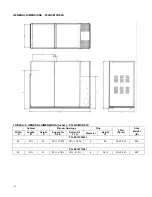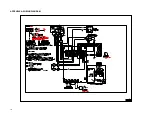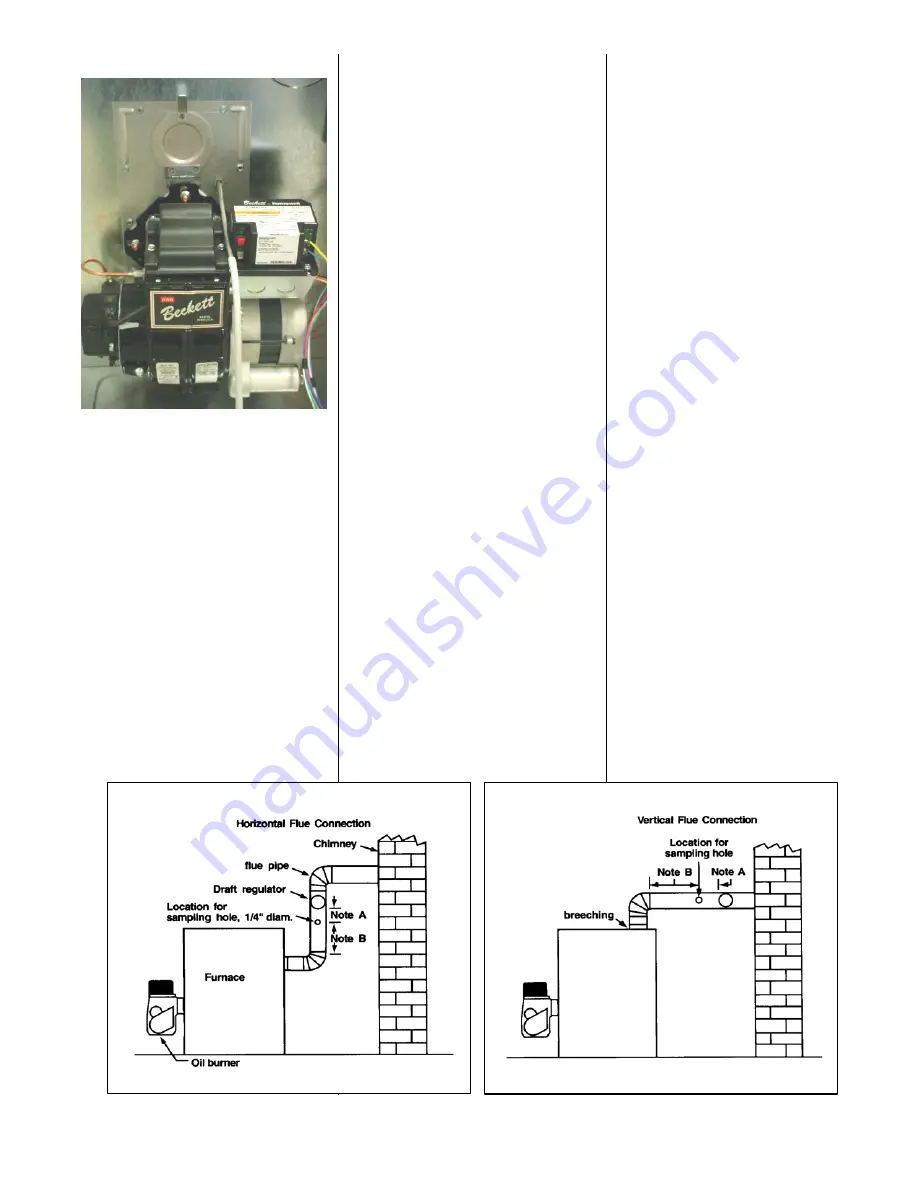
9
Fig. 3: Checking Over-Fire Draft.
STACK TEMPERATURE:
Stack temperature will vary depending
on fuel input, circulating air blower
speed, and burner set up, etc. In gen-
eral, stack temperature should typically
range between 380°F to 550°F, assum-
ing that the combustion air is approxi-
mately room temperature (65°F - 70°F).
In general, lower stack temperature indi-
cates greater efficiency; however, ex-
cessively low stack temperature can lead
to condensation forming in the chimney
and / or venting. Sulphur and similar
contaminants in the fuel oil will mix with
condensation to form acids. Acids and
resultant chemical salts will cause rapid
deterioration of the chimney and venting
components, and may attack the fur-
nace.
If the flue gases are below the range, it
may be necessary to slow down the
blower fan. If the flue gases are above
the range, the blower fan may require
speeding up. Stack temperature varies
directly with the system temperature rise.
System temperature rise is the difference
between the furnace outlet temperature
and furnace inlet temperature as meas-
ured in the vicinity of the connection be-
tween the plenum take-offs and the trunk
ducts. Refer to the appliance rating plate
of model for temperature rise range.
If the venting from the furnace to the
chimney is long, or exposed to cold am-
bient temperatures, it may be necessary
to use L-Vent as the vent connector to
reduce stack temperature loss to prevent
condensation. The venting should be
inspected annually to ensure that it is
intact.
FURNACE INSTALLATION SET-
UP
The furnace must be set up as the final
step in the installation.
A) The oil burner must be set up follow-
ing the procedures outlined above.
B) The appliance rating plate should be
consulted for model temperature rise
ranges. To determine the temperature
rise, measure the supply air and return
air temperatures when the furnace has
reached steady state conditions. This is
the point at which the supply air tem-
perature stops increasing relative to the
return air temperature. The furnace may
have to run 10 to 15 minutes to reach
steady state conditions. The measure-
ments may be made with duct ther-
mometers or thermocouples used in con-
junction with multi-meters with tempera-
ture measurement capabilities.
The return air should be measured at a
point where the thermometer will be well
within the air stream near the furnace
return air inlet. Actual location is not par-
ticularly critical; however, avoid locations
where the temperature readings could be
affected by humidifier bypass ducts, the
inside radius of elbows, etc.
The supply air temperature should be
measured at a point where the ther-
mometer will be well within the air stream
near the furnace supply air outlet. Usu-
ally, the side mid-point of the supply air
plenum take-off is ideal, providing it is
out of the line of sight to the heat ex-
changer. If the thermometer is within the
line of sight of the heat exchanger, the
supply air readings may be skewed by
radiant heat from the heat exchanger. If
the plenum take-off is unsuitable, the
supply air temperature may be measured
within the first 18 inches of the first seg-
ment of supply air trunk duct.
If the temperature rise is outside the rec-
ommended range, it may be adjusted on
direct drive equipped units by selecting
alternate circulation fan motor speeds. If
the temperature rise is too high, speed
the fan up. If the temperature rise is too
low, slow the fan down.
C) Keep in mind that the stack tem-
perature varies directly with the tempera-
ture rise. The higher the temperature
rise, the higher the stack temperature will
be, resulting in lower efficiency. The
lower the temperature rise, the lower the
stack temperature will be, which, in some
cases, may allow condensation to form
in the chimney and other vent parts.
D) Test the high limit control to ensure
that it is operating correctly. This may be
done by temporarily removing the circu-
lator fan heating wire or neutral wire.
Turn of electrical power to the furnace
before working with the motor wires. Be
sure to protect any removed wires from
shorting out on metal furnace parts. If the
high limit test is successful, shut off the
Fig.5 Vertical Smoke test Loca-
Fig.4 Horizontal Smoke test Loca-
Содержание P3HMX12F08001
Страница 16: ...16 APPENDIX A WIRING DIAGRAM ...







